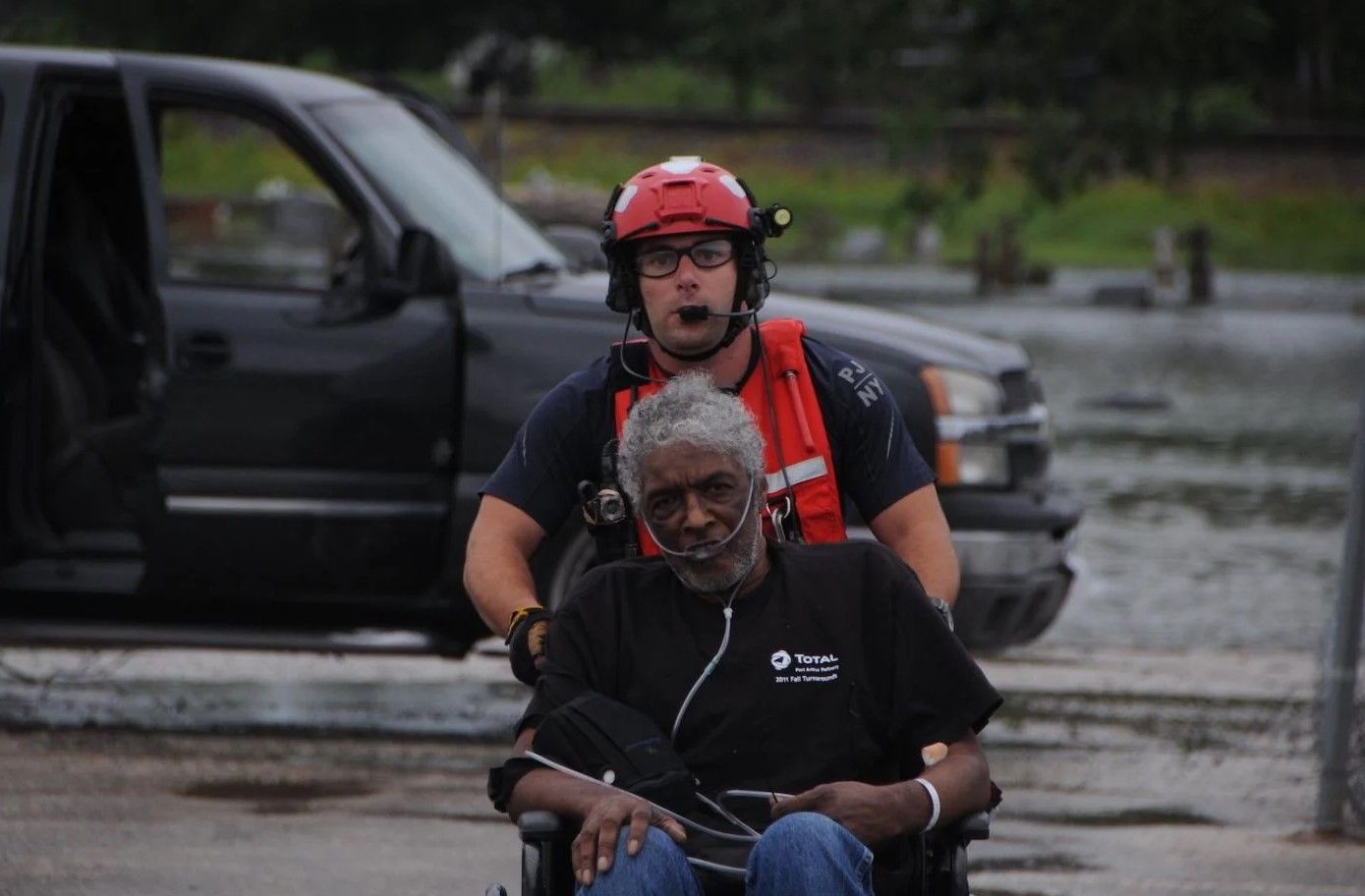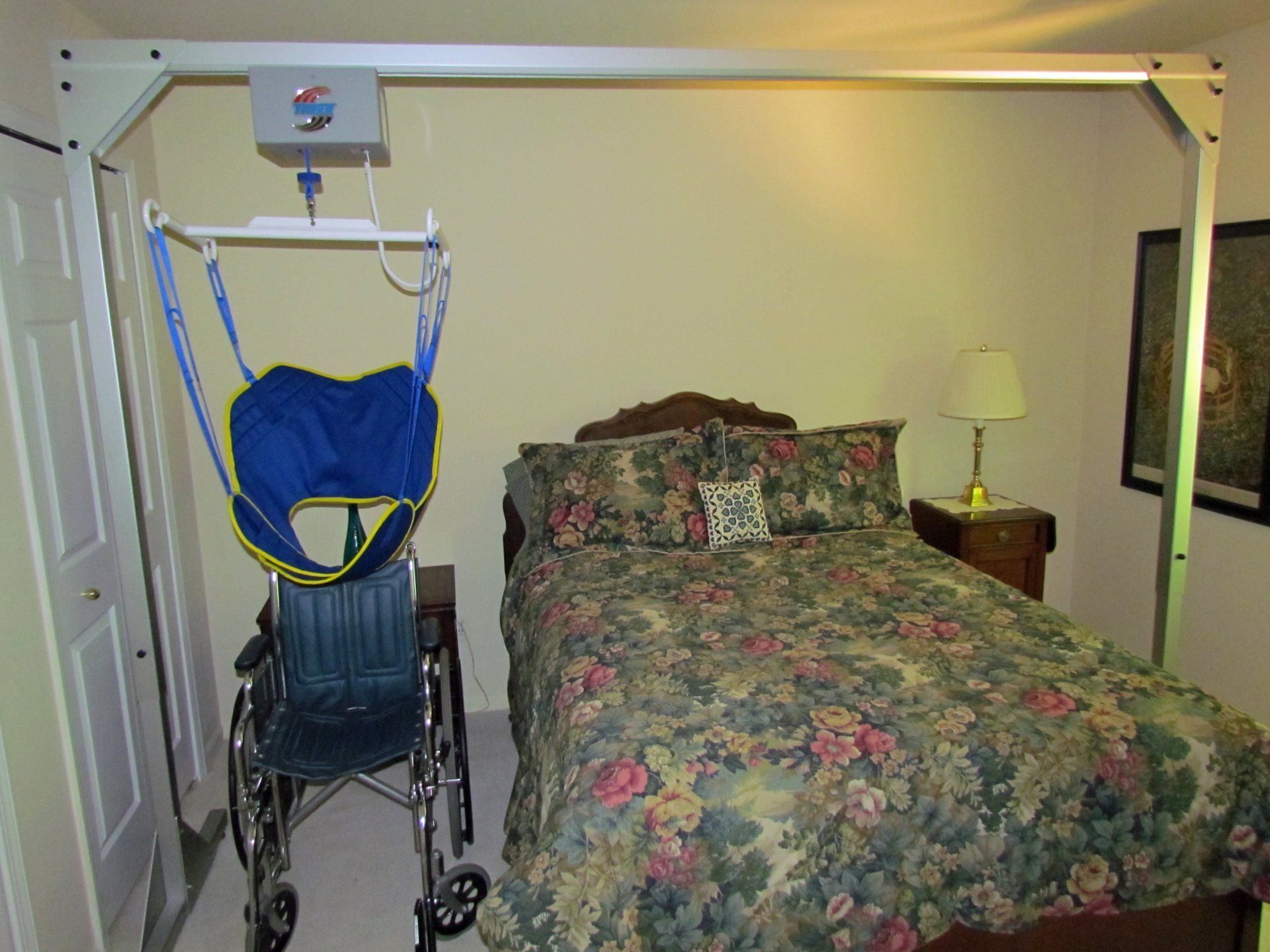Care Tactics: Hacking An Ableist World
HERE IS WHAT DOESN’T GO VIRAL:

By Laura Mauldin
Picture © Facultative Works
As part of a project funded by the Social Science Research Council, virtual interviews and home visits were conducted with forty-four caregivers, and their partners when possible, across twenty-two states to ask them about their caregiving experiences. Participants also provided photos of their homes and hacks. In compliance with research ethics, all names are pseudonyms.
For an archive of detailed examples of disability hacks sourced from the spousal caregivers and disabled folks who participated in this research, you can visit www.disabilityathome.org.
Ángel worked as a housepainter for decades but had a stroke three years ago that paralyzed the left side of his body. Now, his favorite spot is the recliner in his living room. From his perch, he can reach some essential items that he stores on a table to his right: a power screwdriver, painter’s tape, and a clipboard with paper and pen.
“I’d like to mount this new striker plate on the front door,” Ángel says. He transfers himself from the recliner to his wheelchair and leans over to pick up a small metal striker plate along with the roll of tape from the table. Using his right foot, he turns around and propels his wheelchair toward the front door. Then, he props the roll of tape between his knees in order to pull off a section. He sets the striker plate on the tape, pulls a little more while bracing it with his knees, and tears it off. Ángel wheels in closer to the frame and lifts the tape and striker plate onto the inside of the door jamb, pressing it into place. It stays there, mounted to the spot where he needs it. “Now, I just need to screw it on.” He wheels over, gets a screw from the table, and passes it through the hole in the striker plate so that it sits just inside the hole already drilled into the door jamb. “See?” Now, he’s set up to use the screwdriver with his “good hand.”
Here is what does go viral: braille decoder rings, sign-language-translating gloves, “haptic footwear” for blind folks, stair-climbing wheelchairs. In other words, a preponderance of innovations, unveiled to great fanfare, that purport to solve disability-related problems. While the press applauds the tech sector’s forward-thinking and sensitivity to the needs of underserved populations, the concerns of disabled people—voiced again and again and again—are disregarded. So much uncritical attention gets lavished on these seductive yet generally silly objects that the disabled design critic Liz Jackson aptly named them “disability dongles” in 2019. This concept was recently taken up again in a piece for Platypus coauthored by Jackson, along with Alex Haagaard and Rua Williams. In it, they argue that disability dongles generate feel-good content for brands that may be “promising in concept, but in actuality unattainable.” Indeed, they’re often just prototypes that designers have no intention of ever manufacturing.
In this way, disability is rarely meaningfully engaged, and efforts to build a more accessible world are abandoned in favor of high-tech Band-Aids designed to “fix” an individual person’s interactions with it. Meanwhile, disabled people develop and share hacks—which often don’t require high-tech anything—to MacGyver their way through daily life. I’m talking about ingenious practices that I’ve noted elsewhere, such as using a mortar and pestle to crush pills for a feeding tube that a plastic pill grinder couldn’t handle, or cutting a ring out of the opening of a sock and sliding it up to just below a knee to prevent skin irritation from a leg brace. In contrast to what gets churned out in glossy promotional materials for corporations and tech start-ups, disabled people find creative ways to make their worlds accessible every day.
Read the entire article here: https://thebaffler.com/salvos/care-tactics-mauldin?fbclid=IwAR1nL1DRDN8aW9r_q8HMlpF_1CHehhz-g699guF87F9i2n0ogLDEAluST-c











